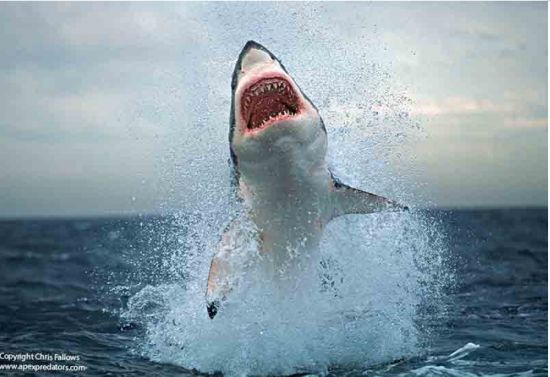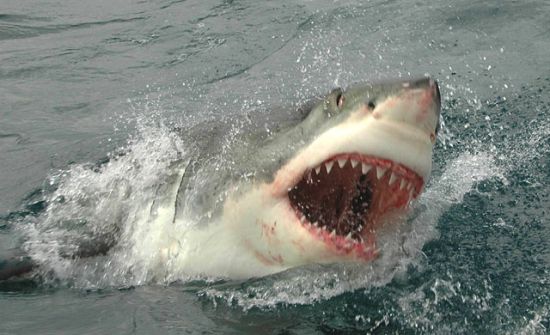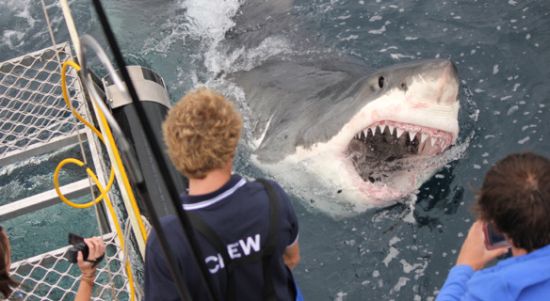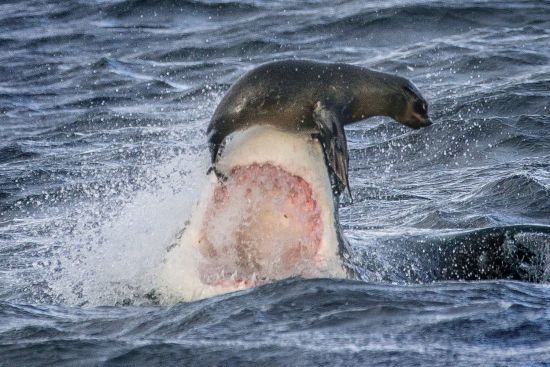
When visiting Africa, the Big Five are on top of everyone’s bucket list. Seeing the Big 5 on safari is often the Number One reason to visit the African Continent- safari. Richard has always maintained that Africa has more surprises and more wildlife than most people can possibly imagine.
Seeking the lesser known but no less majestic – the Marine Big 5 are becoming more and more popular on a visit to Africa. So brace yourself for the magnificent Marine Big 5 and the “Serengeti of the Sea”. The Marine Big 5 includes whales, sharks, seals, penguins and dolphins, ocean creatures particularly popular at the southern tip of Africa.

The bountiful waters of South Africa are home to all 5 of the Marine Big 5, and can be viewed when on a safari trip to South Africa. Richard shares some of his favourite facts about each of these iconic species of the ocean, that he personally discovered whilst in Africa. In this post he shares about the most well known of the marine Big 5 – the Great White Shark.
The shark cage diving industry is thriving and one of the “must do” items on a trip to South Africa.
- Great white sharks are the ocean’s largest predatory fish. The can reach lengths of 20 feet and weigh up to 5,000 pounds.

- They are very well camouflaged as their slate grey upper bodies blend in with the rocky sea floor when looking down at them. Their underbellies are white and blend in with the sky when looking from below.
- A great white shark has 300 teeth and they are arranged in up to seven rows. When one tooth falls out the next one falls into place.
- They can reach speeds of 15 mph and are able to propel themselves completely out of the water when pursuing prey.

- Female great white’s usually give birth to between 2 and 12 babies per year. Unlike other sharks, great whites are born alive and can swim immediately. It is unknown where the great whites give birth to their young.
- Great whites can live to be 60 years old.
- These predators have a 6th sense called electromagnetism. This sense allows them to hone in on small electrical signals from the heartbeats of their prey.

PIC BY DAVID JENKINS / CATERS NEWS – (PICTURED A seal leans on the tip of the nose of a great white shark) This is the jaw-some moment one lucky seal manages to overturn the odds and escape from a Great White – after balancing on its nose. Photographer, David Baz Jenkins, 41, spotted the near-death battle while on board a Great White shark tour boat off the coast of Cape Town, South Africa. As these amazing photographs show one seal escaped the jaws of death after balancing on the massive sharks nose just inches from rows and rows of razor sharp teeth. David, 41, from Dublin, Ireland, said The seals were making their way back to Seal Island after feeding out at sea and the sharks travel below them. SEE CATERS COPY
- Despite the fear they produce in man, great whites are only responsible for about 5 -10 attacks a year, most of which are not fatal.
- The Great white shark is one of the hardest creatures to keep alive in captivity. Most die within a few days.
- Great whites also utilize a technique called “spy hopping” where they will stick their heads out of the water to view prey, such as seals, sitting on land.

Richard has more than 12 years of personal travel in Africa, in addition to guiding and planning trips and itineraries for his clients. He has seen and experienced most of Southern and East Africa and is continuously staying up to date and researching the latest news, lodges, accommodation and travel logistics. If you need advice or a chat….. just ASK RICHARD!
Check out this video of a 4 metre Great White Shark in “Shark Alley”, South Africa
Southern Sky Adventures
Specializing in guided and self-drive trips through Southern and East Africa & the Indian Ocean Islands
721 Woodward Way, NW, Atlanta, GA 30327 USA
404.300.9630 office – 770.324.0068 cell
Website: www.southernskyadventures.com


